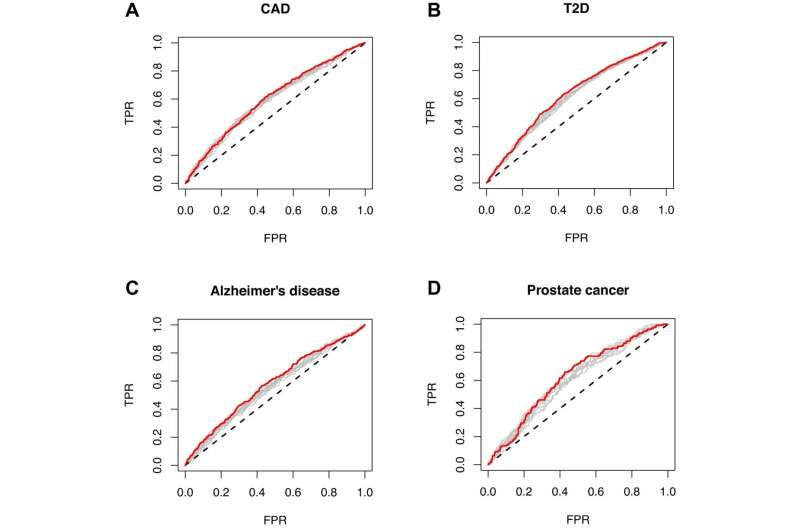This article has been reviewed according to Science X's editorial process and policies. Editors have highlighted the following attributes while ensuring the content's credibility:
fact-checked
peer-reviewed publication
trusted source
proofread
Risk prediction using genes and gut bacteria can improve early detection of diseases like type 2 diabetes

A new study has shown that risk scores based on our genes and gut bacteria can improve the prediction of diseases such as type 2 diabetes and prostate cancer over traditional risk factors alone.
When it comes to the prediction of a person's risk of coronary artery disease, type 2 diabetes, Alzheimer's disease, and prostate cancer, combining traditional risk factors that are used by doctors today with new technologies that quantify our genetic risk (polygenic risk scores) and gut bacteria (gut microbiome) resulted in the most powerful predictors of common chronic diseases.
The study, led by Dr. Yang Liu, is one of the first to look at the combined impact of genetics and the gut microbiome on disease risk and paves the way for a more refined, powerful, and personalized approach to disease prediction.
Published in Nature Aging and based on the data of more than 5670 adults, the study is a collaboration by the Baker Heart and Diabetes Institute, the University of Cambridge and the Finnish Institute of Health and Welfare.
While traditional risk factors typically rely on age, sex, and measurements like body mass index, blood pressure, non-HDL cholesterol, and HbA1c, this study highlights how large-scale analysis of a person's genetics and gut bacteria can improve predictive performance.
In this study, researchers investigated the individual and combined predictive performance of polygenic risk scores, the gut microbiome, and traditional risk factors for the development of future coronary artery disease, type 2 diabetes, Alzheimer's disease, and prostate cancer over a median of ~18 years of follow-up, using the population-based FINRISK 2002 cohort.
The recent emergence of multi-omics means that it is now possible to measure and integrate who classes of biomolecular and cellular factors for the purpose of building multi-omic risk scores.
Multi-omic technologies, which are powering discovery across multiple aspects of biology from the genome, proteome, and transcriptome to epigenome and microbiome, have uncovered new biomarkers for various common age-related diseases. If diseases such as coronary artery disease, Alzheimer's Disease, prostate cancer, and type 2 diabetes can be predicted early, prevention strategies can also be applied.
Dr. Liu says these personalized risk scores, combined with traditional risk factors, open up new avenues for non-invasive risk profiling and early detection of disease.
"This study shows the potential of integrating a person's multiple omes in advancing understanding of the development and prediction of diseases," says Dr. Liu. "Multi-omics has come a long way, but data integration and translation into benefits for clinical decision-making remain challenging."
More information: Yang Liu et al, Integration of polygenic and gut metagenomic risk prediction for common diseases, Nature Aging (2024). DOI: 10.1038/s43587-024-00590-7

















